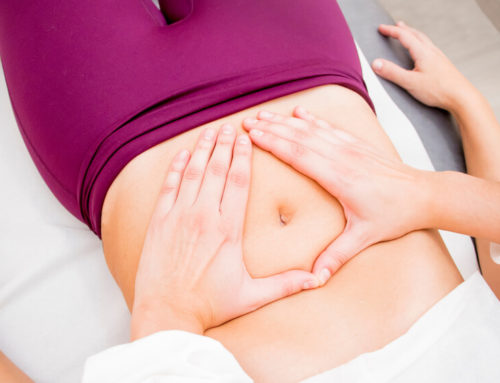When it comes to your body and unexplainable pains, you can never be too cautious. The old saying “better to be safe than sorry” applies to your overall health but especially with certain symptoms and regions of your body. Whether a sudden pain ends up being something common and mild or something life-threatening, it is always better to be certain and get it checked out. When you feel a sharp pain in the private area, you should definitely take notice and seek medical care to figure out the cause.
While we are not suggesting that you take this article as medical advice, but instead we hope to provide a little knowledge on the common causes of pain in the vaginal area that way you are able to provide your doctor with some more insight on what your symptoms may be related to. Fear and embarrassment can sometimes keep women from seeking medical attention for symptoms and conditions that they know they should be concerned about. Vaginal pain should always be taken seriously, no matter your age or health condition because there are several delicate organs and tissues involved that can be prone to serious health conditions.
Sharp pain in the private area can be caused by everything from physical injury to chronic diseases and the complete list of causes is far too extensive to discuss in this article. However, we are going to list some of the most common (mild & severe) causes for sharp vaginal pain.
-
Vulvodynia
– unlike the rest of the conditions on the list, vulvodynia does not have an apparent cause for the pain or symptoms experienced. Roughly 15% of women in the US suffer from this condition. Typically, the pain is present around the opening of the vagina and is often described as vaginal burning or rawness that can make certain activities unbearable. With no known cure because the cause is often unknown, doctors will prescribe patients with oral or topical medications to help manage the symptoms and advise against participating in physical activities. Sometimes even dyes, detergents, perfumes, or types of fabric can exacerbate this condition.
-
Various Infections
– one of the most common causes of vaginal discomfort is an infection. Yeast infections will cause sharp pain in the private area in roughly 75% of all women at some point in their lives and can cause serious discomfort from itching, discharge, pain, and vaginal burning. Bacterial vaginosis is another common but different infection that commonly causes some mild pain and uncomfortable symptoms. Sexually transmitted infections, STIs, such as chlamydia and gonorrhea, are also fairly common amongst women. It is crucial that you see your doctor if you believe you may have one of these infections because the treatments for each are different and they will not go away on their own. If the STIs are not treated, PID, or pelvic inflammatory disease, can develop. These types of bacterial infections can spread from the vagina to the uterus, fallopian tubes, or ovaries. Severe vaginal pain can be a common symptom as well as fever, abnormal periods, and frequent or trouble with urination.
-
Physical Trauma
– whether the pain is caused by sports, sexual intercourse, or any other physical activity, trauma can be a common cause of vaginal pain. While sex is more likely to cause internal trauma and pain, external trauma and injuries, including bruises, cuts, scrapes, etc. will all cause vaginal pain as well. It is a smart idea to see your doctor after an injury like this to make sure no serious internal damage was done to the tissues or organs.
-
Other Common Causes
– there are several more causes of vaginal pain that can include reactions to birth control methods, complications from previous surgical procedures, rashes and irritation of the vulvar nerves, vaginal dryness after menopause, and vaginismus which is the involuntary muscle spasms of the vaginal wall.

These following conditions are going to be more related to the reproductive system and can cause various symptoms as well as vaginal pain.
-
Endometriosis
– This condition occurs when the type of tissue that lines the uterus (endometrium) grows outside of the uterus like in the ovaries, fallopian tubes, or even the intestines. Sharp pain in the vaginal area, coupled with menstrual irregularities, is the tell-tale sign because this tissue acts just like the endometrium in the uterus, which is what sheds during menstruation.
-
Ovarian Growths
– Typically, these cysts will be a solid mass or a fluid-filled sac and located within or on the surface of the ovary. Most often, these growths will dissipate on their own, but in some situations, they will require medical treatment. Pain, menstrual irregularities, and irregular bowel movements are common symptoms with these types of growths.
-
Uterine Fibroids
– These are non-cancerous growths that develop in the uterus during childbearing years. The cause of these growths remains unclear; however, the symptoms typically include prolonged menstruation and pelvic/vaginal pain. Medications typically help resolve the issue, but sometimes surgical removal is necessary.
-
Cancer
– As you may already know, cancer is the uncontrolled cell growth of certain types of tissue and there are six types of gynecological cancer. Each of the following can cause severe vaginal pain, as well as many other symptoms. The types of cancer include cervical, ovarian, uterine, vaginal, vulvar, and fallopian tubes. Like many other aggressive diseases, cancer is best treated when it is caught in the early stages and this is one of the most important reasons to get any abnormal pains checked out sooner rather than later.
-
Vaginal Tearing
– The injuries that happen around your vagina during childbirth are considered vaginal tearing. The severity of these injuries is separated into four degrees, with the fourth being the most difficult for the patient. There are multiple reasons for this type of issue to happen, with having a large baby being the most common.
-
Atrophic Vaginitis (Vaginal Atrophy)
– Vaginal Atrophy occurs when women approach their menopausal years and their bodies naturally begin to produce less estrogen. But it can also occur as a result of childbirth when hormones are out of balance. Atrophic vaginitis is categorized by the thinning, drying, and inflammation of the internal vaginal walls. Most women will often experience several uncomfortable and painful symptoms related to this condition including burning/itching, frequent urination, recurrent UTIs, shortening/tightening of the vaginal canal, sharp pain in the private area, and bleeding after intercourse.

While you may never experience most of these causes for pain that were mentioned above, there is nearly a 50% chance that you will or already have experienced some symptoms of atrophic vaginitis. Aside from hormone replacement therapy (HRT), there really has not been too many options aside over-the-counter lubricants for women, especially those with a history of cancer (HRT is not an option), until now. Dr. Andrew Krinsky of Tamarac, FL, is proud to provide a revolutionary treatment, MonaLisa Touch, for women who are looking to regain their comfort and confidence that has suffered due to the side effects of vaginal atrophy. MonaLisa Touch is a non-surgical, out-patient procedure that is aimed to restore the healthy functioning of the vaginal tissues naturally. By using a special fractional CO2 laser that is inserted into the vagina, the energy penetrates the vaginal tissues and stimulates the natural production of collagen, which helps reestablish proper vaginal mucosa conditions. The MonaLisa Touch in Tamarac, South Florida is a rapid, pain-free procedure that provides the results women want and our patients have reclaimed their enjoyment in life that was once hindered by vaginal pain and discomfort caused by atrophic vaginitis.
Please remember that any vaginal soreness or pain is to be treated with concern and that you schedule an appointment right away to determine the cause and severity of the possible condition. Visit our website today to learn more about the innovative services and patient care that we provide.



